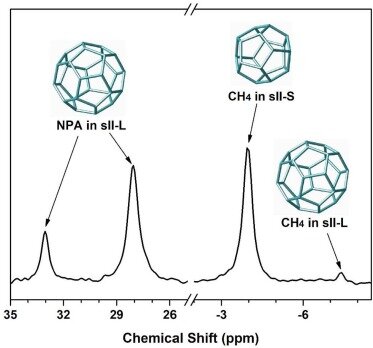Secondary gaseous guest-dependent structures of binary neopentyl alcohol hydrates and their tuning behavior for potential application to CO2 capture
S. Moon, Y.-H. Ahn, H. Kim, S. Hong, D.-Y. Koh, Y. Park*, Chem. Eng. J. vol.330, pp.890~898, (2017)
Clathrate hydrates, commonly called gas hydrates, are non-stoichiometric inclusion compounds with tunable gas storage and separation capabilities. Various efforts have been made to apply these hydrates to energy and environmental fields including energy storage and greenhouse gas capture and separation technologies. Although the unary use of gaseous guest molecules such as methane, carbon dioxide, and nitrogen is generally expected to achieve maximal storage capacity by filling the guest in both small and large cages of each structure, introducing additional liquid guest molecules into the clathrate hydrates could be a more feasible option from an engineering perspective, since such liquid guest molecules often play a critical role in stabilization of the clathrate hydrate by shifting the thermodynamic phase equilibria to practically implementable milder pressure and temperature conditions. Here, we focus on the binary neopentyl alcohol clathrate hydrates with gaseous guest molecules, including carbon dioxide, methane, and nitrogen, to provide a better understanding of the complex nature of the host–guest interactions occurring in the clathrate hydrates. Thermodynamic P – T phase equilibria were measured, and spectroscopic analyses were performed employing HRPD, Raman, and NMR spectrometers. The results revealed that the NPA guest molecule forms sI or sII hydrate depending on the binary gaseous guest molecules. This paper also reports for the first time that the composition of CO2 guest molecules may be ‘tuned’ within the cages of sI hydrate of NPA.


